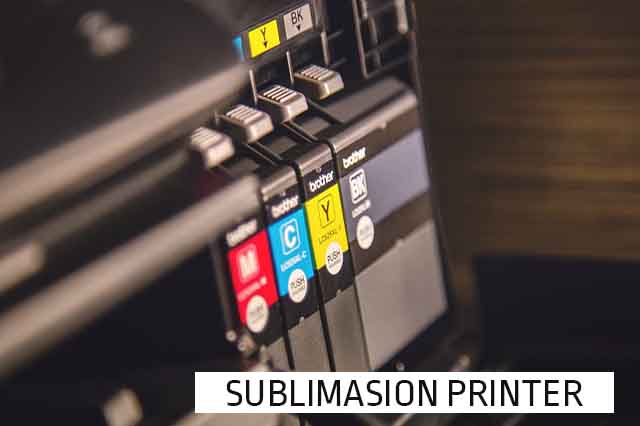A sublimation printer is an essential tool for creating vibrant full color prints that require a level of precision and detail. Sublimation printing uses heat and pressure to transfer pigment color to the substrate material, resulting in brighter colors, higher resolution and longer lasting results than traditional inkjet printing.
In this guide, you will learn about the type of ink used in sublimation printing, as well as the size of the printer and the paper it prints on. In addition we will also talk about color profiles and how they affect your prints. Please note that the content in the article refers to sublimation printers used to print ink for transfer to shirts and hard products. There are sublimation printers used in the field of photography and they are different from the printers we will talk about.
The type of ink
Sublimation printing relies on a special type of dye sublimation ink known as direct diffusion dye. Dispersion dyes were developed in the 20s of the last century in order to be used for dyeing synthetic fabrics that did not dye well with traditional ink. The sublimation ink is not absorbed on paper in the way that other inks are absorbed, so it can be transferred after printing from the paper to the fabric.
Print size
Most sublimation printers print on A4 or A3 size paper. These printers look like home printers, but the difference, of course, is in the ink that the printer prints. There are industrial sublimation printers – wide format printers, where you can print on a larger paper size – starting with a width of 42 cm and up to a width of 3.2 meters.
Sublimation paper
In order to print using the sublimation method, it is necessary to first print the print on paper – and only then is the ink transferred to the garment. The paper they print on is not normal printing paper – although paper can also be used, but the printing results are not of high quality. The sublimation paper is a thicker paper and does not allow the ink to be absorbed into it. Note that the thinner the paper – you will probably need more heat and pressure to transfer the print to the shirt.
ICC color profile
Color profiles refer to how the computer displays maps RGB (red green blue) values to a range (or range) of colors that can be printed by the printer. Color profiles tell these devices how much ink/color to use in each pixel so that accurate color reproduction can be achieved and this is why it is important to specify a color profile when creating digital graphics for optimal output quality from your printer. Many ink suppliers provide a color profile adapted to the ink they market. It is important to note – the color profile refers to the type of printer, so the same ink will need different color profiles if we use it in different types of printers.
What do you print on?
It is also important to remember that different substrates absorb colors differently which means that there may be slight changes between two prints using identical settings but different media types; That’s why it’s always best to test small samples before committing to larger production runs. Because of this there is a difference in the pressing time and pressure between printing on a shirt and printing on ceramics for example. In some printers it is possible to define the type of material on which we would like to print so that already at the stage of printing the paper the printer will take these differences into account.
Summary
The sublimation printer is one of the two important tools in being able to print with this method on clothing (the other tool is the heat press), so it is necessary to know the different types of printers and your needs in order to choose the right type of printer.

